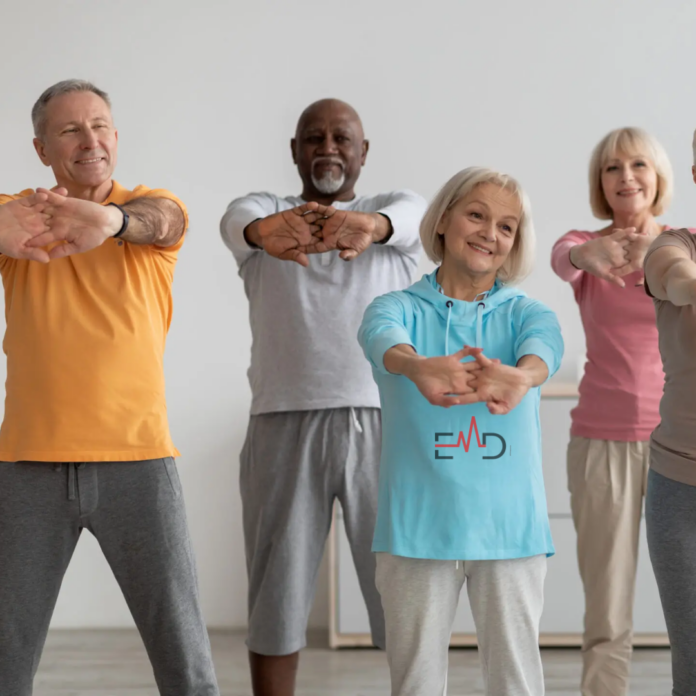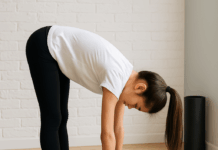Exercise Daily – As we age, it’s essential to prioritize our health and well-being. One of the most impactful ways to do this is through regular exercise. In this blog, we’ll explore the numerous benefits of exercise for seniors and provide practical guidance on how to stay fit and strong in your golden years.
Benefits of Exercise for Seniors
Exercise is a powerful tool that can significantly enhance the quality of life for seniors. It offers many benefits that promote physical, mental, and emotional well-being.
1. Physical Benefits
- Maintaining Muscle Mass: As we age, muscle mass tends to decrease. Regular exercise, especially strength training, helps seniors preserve their muscle mass and strength, making daily tasks easier.
- Improved Cardiovascular Health: Aerobic exercises like walking, swimming, and cycling help seniors maintain a healthy heart and reduce the risk of cardiovascular diseases.
- Enhanced Flexibility: Flexibility exercises, such as yoga and stretching routines, keep joints supple and improve overall flexibility, reducing the risk of injury.
- Better Balance: Balance exercises like tai chi can help prevent falls, a significant concern for seniors, and enhance overall stability.
- Weight Management: Exercise helps control weight, which is crucial for overall health and can reduce the risk of obesity-related conditions like diabetes.
2. Mental and Emotional Benefits
- Mood Enhancement: Exercise releases endorphins, which are natural mood lifters. Regular physical activity can reduce symptoms of depression and anxiety and improve overall emotional well-being.
- Cognitive Function: Studies suggest exercise may help protect against cognitive decline and dementia by promoting healthy brain function.
- Stress Reduction: Physical activity provides an outlet for stress and tension, helping seniors manage the daily challenges of life.
- Improved Sleep: Regular exercise can lead to better sleep patterns, which is essential for overall health and vitality.
3. Social Benefits
- Social Interaction: Participating in group fitness classes or exercise programs fosters social interaction, reducing feelings of loneliness and isolation.
- Community Building: Seniors who engage in regular physical activities build a supportive and close-knit community, leading to a more fulfilling social life.
- Shared Experiences: Sharing exercise routines and progress with others can create a sense of belonging and shared achievement.
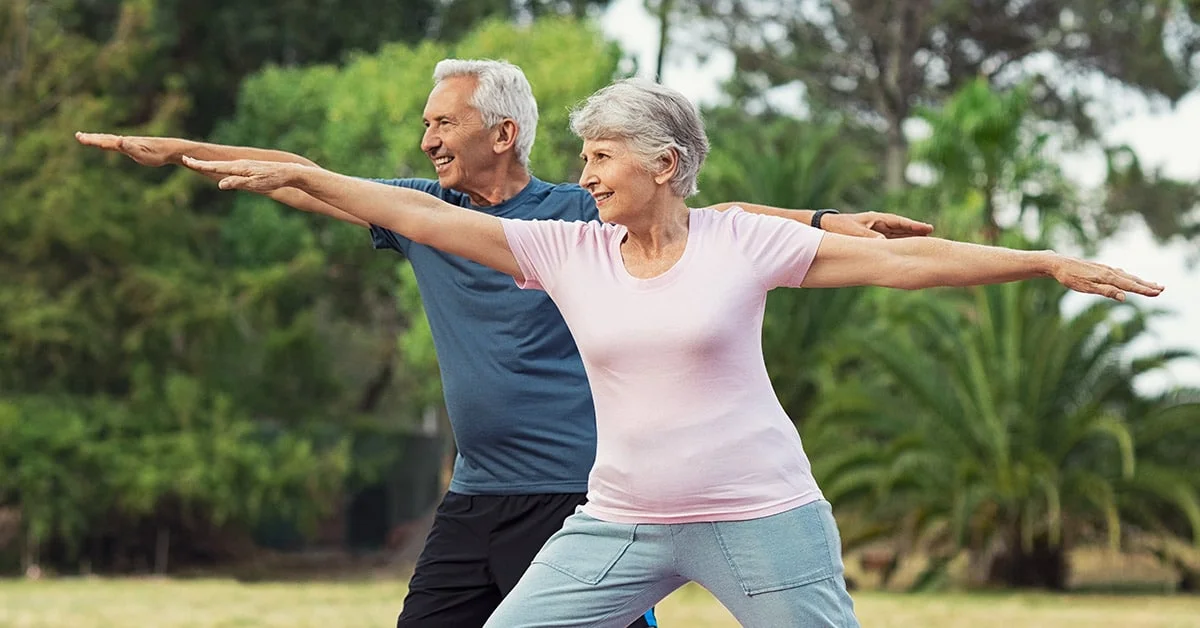
Types of Exercises for Seniors
Seniors benefit from a variety of exercises that cater to their unique needs and physical abilities. These exercises encompass a range of activities that promote strength, flexibility, cardiovascular health, and balance.
1. Aerobic Exercises
Aerobic exercises, or cardio, focus on increasing heart rate and breathing. They help improve cardiovascular health and stamina while being gentle on the joints:
- Walking: Walking is a low-impact exercise that can be done almost anywhere. It’s an excellent choice for seniors looking to enhance cardiovascular fitness.
- Swimming: Swimming is a full-body workout that is easy on the joints. It improves cardiovascular health, muscle tone, and flexibility.
- Cycling: Riding a bike is another joint-friendly aerobic exercise that strengthens leg muscles.
- Dancing: Dancing, whether in a structured class or just around the house, is a fun way to get the heart rate up and improve coordination.
- Water Aerobics: Water aerobics classes in a pool provide resistance while being easy on the joints, making it ideal for seniors.
2. Strength Training
Strength training exercises focus on building muscle and bone density. They are crucial for maintaining independence and preventing muscle loss:
- Bodyweight Exercises: Squats, lunges, and push-ups use your body’s weight to build strength and tone muscles.
- Resistance Bands: Resistance bands provide gentle resistance for strength training without heavy weights.
- Light Weights: Seniors can use light dumbbells or weighted objects to perform strength exercises like bicep curls and leg lifts.
3. Flexibility and Balance Exercises
Flexibility and balance exercises are essential for seniors to prevent falls and maintain mobility:
- Yoga: Yoga improves flexibility, balance, and relaxation. There are senior-specific yoga classes available.
- Tai Chi: Tai Chi is a gentle martial art emphasizing slow, flowing movements to enhance balance and coordination.
- Stretching: Regular stretching exercises improve flexibility and prevent muscle tightness and discomfort.
- Balance Drills: Simple balance exercises like standing on one leg or walking heel to toe help seniors maintain stability.
Tailoring Exercise Routines
Tailoring exercise routines for seniors is essential to ensure that their fitness programs are safe, effective, and aligned with their needs and abilities.
1. Importance of Customization
- Assessing Current Fitness Level: Before starting any exercise program, seniors should assess their fitness level. This includes considering medical conditions, physical limitations, and past exercise experience.
- Setting Realistic Goals: Seniors should establish clear and achievable fitness goals. Whether improving flexibility, building strength, or increasing stamina, having specific objectives helps maintain motivation.
2. Working with a Fitness Professional
- Consulting a Healthcare Provider: Seniors should consult their healthcare provider before beginning any new exercise routine, especially if they have underlying health issues.
- Seeking Guidance: A certified fitness trainer experienced in working with seniors can design a tailored exercise plan. They can consider individual needs and provide proper guidance and support.
3. Customization by Exercise Type
- Aerobic Exercises: The duration and intensity of aerobic exercises should be tailored to a senior’s fitness level. Beginners may start with short, low-intensity sessions and gradually progress.
- Strength Training: Seniors should choose appropriate resistance levels for strength training exercises. The number of repetitions and sets should be adjusted to match their capabilities.
- Flexibility and Balance Exercises: Tailored stretching and balance exercises can address specific areas of concern, such as improving range of motion or stability.
4. Adaptations for Health Conditions
- Cardiovascular Conditions: Seniors with heart conditions should follow exercise guidelines provided by their healthcare provider. Exercises may need to be modified or supervised.
- Arthritis: Low-impact exercises like swimming and tai chi are gentle on joints and suitable for individuals with arthritis.
- Osteoporosis: Weight-bearing exercises can help improve bone density, but precautions may be necessary to avoid injury.
- Diabetes: Exercise can help manage blood sugar levels, but seniors should monitor their glucose levels and adapt their routines accordingly.
5. Monitoring Progress
- Regular Assessment: Seniors should periodically reassess their fitness levels and adjust their routines as they progress. What may have been challenging initially may become easier over time.
- Listening to the Body: Attention to how the body responds to exercise is crucial. Seniors should be mindful of any discomfort or pain and make necessary adjustments.
6. Social and Psychological Considerations
- Social Support: Exercising with friends or in group classes can provide motivation and a sense of community for seniors.
- Mental Well-Being: Seniors should consider their mental well-being when tailoring exercise routines. Activities that they enjoy can boost motivation and provide a sense of accomplishment.
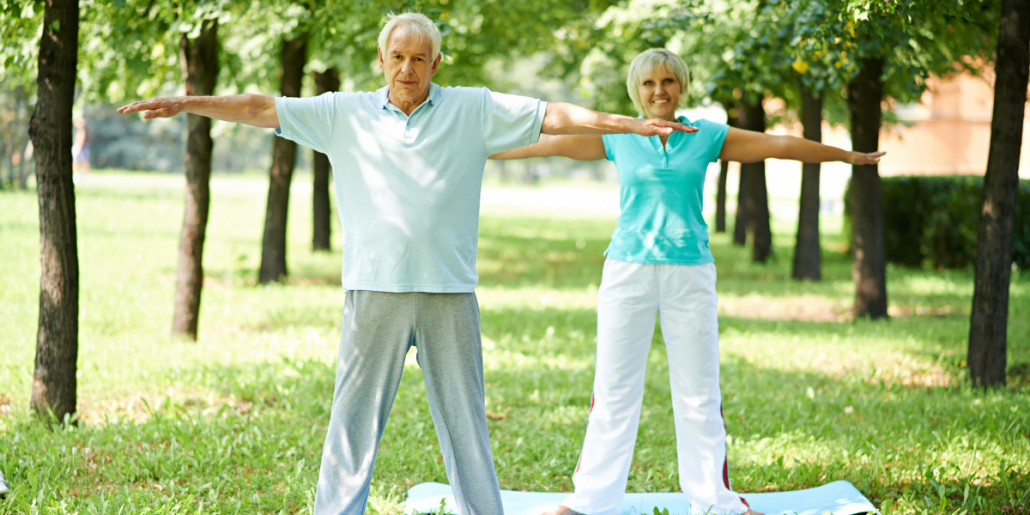
Safe Exercise Practices
Safe exercise practices are paramount, especially for seniors, to ensure that physical activity remains beneficial without risking injury or Overexertion.
1. Warm-Up and Cool-Down Routines
- Warm-Up: Always begin with a 5-10 minute warm-up. Gentle movements like walking or marching in place increase blood flow to muscles and prepare them for more strenuous activity.
- Cool-Down: After exercise, spend 5-10 minutes doing low-intensity activities like slow walking or stretching. This helps reduce muscle soreness and prevents abrupt drops in heart rate.
2. Proper Form and Technique
- Correct Form: Seniors should focus on maintaining proper form during exercises. Incorrect form can lead to injury. Consider working with a fitness professional to ensure the correct technique.
- Range of Motion: Seniors should use their full range of motion during exercises but avoid overstretching or pushing joints too far.
- Breathing: Encourage seniors to breathe naturally during exercises. Holding the breath can lead to dizziness and may affect blood pressure.
3. Gradual Progression
- Gradual Increase: Seniors should gradually increase the intensity, duration, or weight of their exercises. Avoid rapid or drastic changes to prevent strain.
- Listen to the Body: Seniors should pay attention to how their body responds. Pain, dizziness, or shortness of breath are signals to stop and rest.
4. Adequate Hydration
- Stay Hydrated: Proper hydration is crucial. Seniors should drink water before, during, and after exercise, especially in warm weather.
5. Appropriate Attire and Equipment
- Comfortable Clothing: Wear loose, breathable clothing and well-fitting, supportive footwear suitable for the type of exercise.
- Safety Equipment: When necessary, use safety equipment such as helmets, knee pads, or gloves for specific activities.
6. Balancing Rest and Activity
- Rest Days: Seniors should incorporate rest days into their exercise routine to allow muscles and joints to recover.
7. Avoiding Overexertion
- Pacing: Encourage seniors to exercise at a comfortable pace. They should be able to carry on a conversation during moderate-intensity exercises.
- Know Limits: Seniors should know their physical limits and not push themselves to exhaustion. Rest should be taken when needed.
8. Supervision and Support
- Support System: Having a workout partner or exercising in a group can provide encouragement and support while ensuring safety.
- Health Professional Consultation: Seniors with pre-existing medical conditions or those new to exercise should consult their healthcare provider before starting an exercise program.
Overcoming Common Barriers
Overcoming common barriers is essential for seniors looking to establish and maintain a regular exercise routine. These barriers can include lack of motivation, health conditions, and the challenges of incorporating exercise into daily life.
1. Lack of Motivation
- Set Clear Goals: Seniors should define specific, achievable fitness goals. Whether improving strength, increasing stamina, or losing weight, having clear objectives provides motivation.
- Find a Workout Buddy: Exercising with a friend or family member can make workouts more enjoyable and provide mutual motivation and support.
- Variety: Keep workouts interesting by trying different activities or classes. Variety prevents boredom and helps maintain motivation.
- Reward System: Establish a reward system for reaching fitness milestones. Rewards can be small, like treating yourself to a favorite healthy snack.
2. Health Conditions and Limitations
- Consult a Healthcare Provider: Seniors should consult with their healthcare provider before starting an exercise program, especially if they have medical conditions. Doctors can guide suitable exercises and safety precautions.
- Adaptations: Seniors can adapt exercises to accommodate their health conditions. For instance, chair exercises can be beneficial for those with mobility issues.
- Physical Therapy: Physical therapy can help seniors address specific health-related limitations and develop tailored exercise plans.
3. Incorporating Exercise into Daily Life
- Schedule It: Seniors should schedule exercise sessions like appointments. Consistency is key to building a routine.
- Short Sessions: If time is a barrier, seniors can break exercise into shorter, more manageable sessions throughout the day.
- Integrate into Daily Activities: Incorporate exercise into daily tasks, such as gardening, taking the stairs instead of the elevator, or walking to nearby destinations.
4. Mindset and Attitude
- Positive Self-Talk: Seniors should cultivate a positive mindset and challenge negative thoughts that may deter them from exercising.
- Mindfulness: Practicing mindfulness and staying present during exercise can enhance the experience and motivation.
- Celebrate Small Wins: Acknowledge and celebrate even small achievements and progress in fitness goals.
Staying Active at Home
Staying active at home is not only convenient but also essential for seniors who may have mobility limitations or prefer the comfort of their own space.
1. Simple Exercises for Home
- Chair Exercises: Seniors can perform various seated exercises using a sturdy chair. Leg lifts, seated marches, and seated leg extensions are excellent options.
- Wall Push-Ups: Stand facing a wall at arm’s length, place your hands on the wall at shoulder height, and perform wall push-ups to strengthen the upper body.
- Stair Climbing: If your home has stairs, climbing them is a great way to work on lower body strength and cardiovascular fitness. Start slowly and hold onto a railing for support if needed.
- Yoga and Stretching: Gentle yoga routines and stretching exercises can be done at home to improve flexibility and balance.
- Resistance Bands: Invest in resistance bands, which are affordable and versatile. Seniors can use them for strength training exercises such as bicep curls, shoulder presses, and leg lifts.
2. Household Items as Workout Equipment
- Water Bottles as Weights: Filled water bottles can serve as makeshift dumbbells for resistance exercises.
- Broomstick for Balance: Holding onto a broomstick can provide stability during balance exercises or stretches.
- Towels for Stretching: Towels can be used for seated leg stretches or gentle resistance exercises.
3. Online Exercise Resources
- Exercise Videos: There are countless exercise videos available online, ranging from chair yoga to low-impact aerobics. Seniors can follow along with these guided workouts.
- Senior-Friendly Apps: Some apps are designed for seniors, offering exercise routines tailored to their needs and abilities.
4. Daily Activity Integration
- Household Chores: Engaging in household chores like vacuuming, sweeping, or gardening can provide physical activity while accomplishing tasks.
- Dancing: Put on your favorite music and dance around your living room. Dancing is a fun way to get your heart rate up and improve your mood.
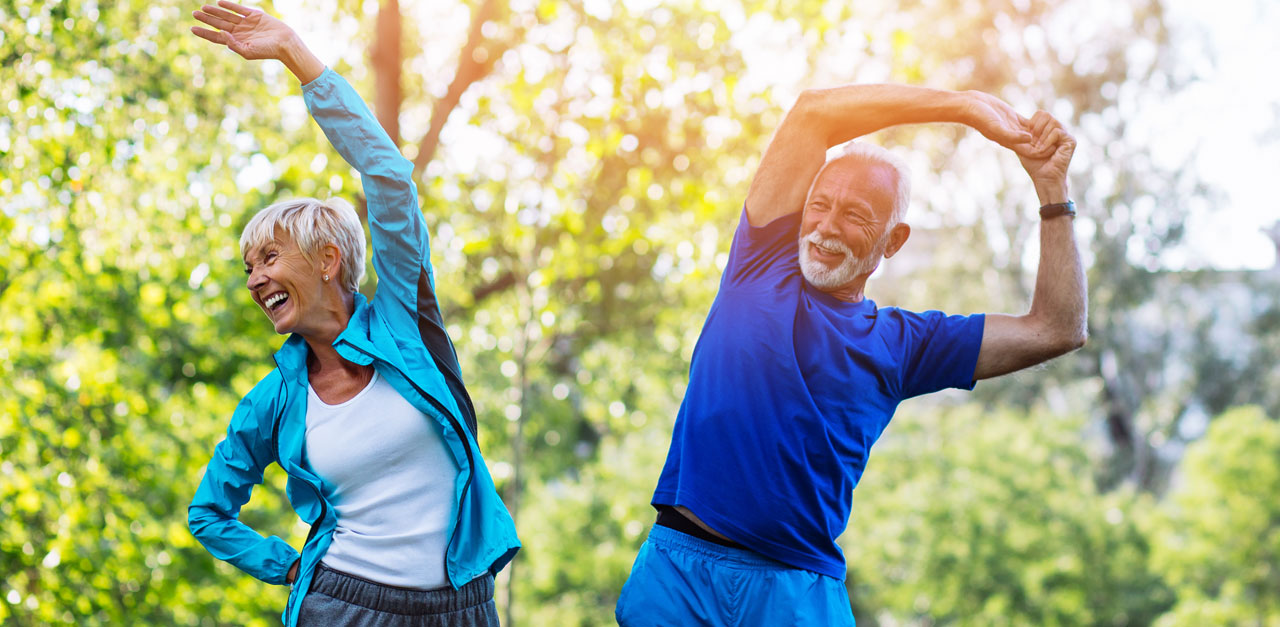
Group Activities and Social Engagement
Group activities and social engagement play a crucial role in the lives of seniors, offering not only physical benefits but also fostering a sense of belonging and well-being.
1. Group Fitness Classes
- Join a Local Gym: Many gyms offer senior-specific fitness classes, such as senior aerobics, water aerobics, and senior yoga. These classes provide an opportunity to exercise while socializing with peers.
- Dance Classes: Dance classes like ballroom, line dancing, or salsa are not only physically engaging but also great for social interaction.
- Tai Chi and Qigong: These mind-body practices are often taught in group settings and promote balance, flexibility, and relaxation.
- Walking Groups: Form or join a walking group in your community. Walking with others can make exercise more enjoyable and provide a chance for conversation.
- Outdoor Activities: Group hikes, nature walks, or outdoor fitness classes can be enjoyable ways to stay active while connecting with others.
2. Senior Centers and Community Organizations
- Senior Centers: Local senior centers often host a variety of activities, including card games, arts and crafts, and group outings.
- Volunteer Opportunities: Seniors can engage in volunteer work, such as tutoring, mentoring, or assisting at local charities, which not only fosters social connections but also gives a sense of purpose.
- Book Clubs: Joining a book club or discussion group can provide mental stimulation and opportunities for social interaction.
- Art Classes: Explore your creative side by taking art or pottery classes in a group setting.
3. Technology and Virtual Groups
- Online Communities: Seniors can participate in online forums, social media groups, or virtual events tailored to their interests.
- Video Calls: Staying connected with family and friends through video calls can alleviate feelings of isolation and loneliness.
4. Support Groups
- Health Support Groups: For seniors with specific health conditions, support groups can provide valuable emotional support and shared experiences.
- Bereavement Groups: Grief support groups offer a safe space for seniors who have experienced loss to connect with others who understand their feelings.
5. Organized Events
- Community Events: Participate in local festivals, fairs, or cultural events to enjoy community and social engagement.
- Senior Games: Some areas host senior games or sporting events encouraging friendly competition and camaraderie.
- Travel Groups: Joining a travel group for seniors allows for exploring new destinations.
6. Neighborhood Gatherings
- Neighborhood Socials: Participate in neighborhood gatherings, potlucks, or block parties to build connections with neighbors.
- Gardening Clubs: If you enjoy gardening, consider joining or starting a neighborhood gardening club where you can work on community projects together.
7. Card and Board Games
- Bridge, Chess, or Mahjong: These games not only stimulate the mind but also provide opportunities for socializing.
- Puzzle Clubs: Group puzzle solving, whether jigsaw puzzles or crosswords, can be a fun and social activity.

FAQs – Exercise for Seniors: Staying Fit and Strong
Q1: Can seniors start an exercise routine if they’ve never exercised?
A1: Absolutely! It’s never too late to start. Begin with gentle exercises and gradually increase intensity.
Q2: Are there exercises suitable for seniors with mobility issues?
A2: Yes, many seated and low-impact exercises can be tailored to individuals with limited mobility.
Q3: How often should seniors exercise?
A3: Aim for at least 150 minutes of moderate-intensity weekly exercise spread throughout the week.
Q4: Is it safe for seniors to lift weights?
A4: Yes, with proper guidance, strength training can be safe and beneficial for seniors.
Q5: What’s the best way to stay motivated to exercise regularly?
A5: Finding a workout buddy, setting realistic goals, and celebrating achievements can help you stay motivated.
Conclusion
Exercise is the key to staying fit and strong as a senior. It offers a multitude of physical, mental, and social benefits. However, by customizing your exercise routine, practicing safe habits, and staying committed, you can enjoy a healthier and more active lifestyle in your golden years. So, why wait? Start your fitness journey today!

